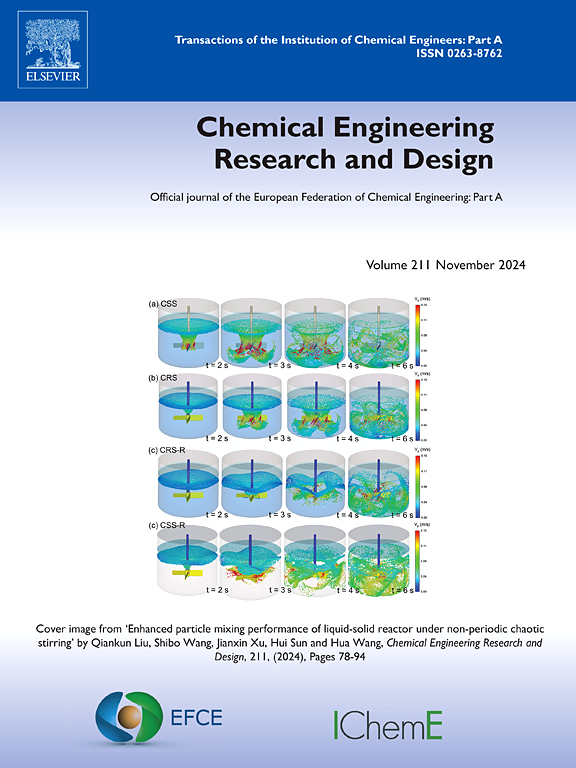Conceptual design, process simulation and economic evaluation for the production of synthetic fuels in Argentina
IF 3.7
3区 工程技术
Q2 ENGINEERING, CHEMICAL
引用次数: 0
Abstract
This paper presents the design and economic evaluation of an industrial plant for the production of e-fuels, specifically oriented to e-kerosene. The study deals with the conceptual design of the process, focusing on equipment sizing and thermal integration to optimize energy efficiency and kerosene yield. Key components of the plant include the synthesis gas production (reverse water gas shift), the Fischer-Tropsch synthesis unit, the hydrocracking reactor and distillation train. Auxiliary services (cooling water service and steam production and use) are included as well. Both hydrogen (produced electrolytically from wind energy) and carbon dioxide (captured from exhaust gas turbine nearby the plant) are considered as raw materials for the process under study. Results indicate a consumption of 0.8 kgH2/kgfuel and 3.1 kgCO2/kgfuel with a kerosene yield of ca. 75 %. The economic assessment considers capital and operating expenditures (CAPEX and OPEX), market conditions. Profitability indicators, such as Net Present Value (NPV), Internal Rate of Return (IRR), Payback Period (PBP) and Levelized Cost of Fuel (LCoF), are used to evaluate the plant's financial viability. A sensitivity analyses explores the influence of hydrogen costs and kerosene selling pricing over the internal rate of return.
求助全文
约1分钟内获得全文
求助全文
来源期刊

Chemical Engineering Research & Design
工程技术-工程:化工
CiteScore
6.10
自引率
7.70%
发文量
623
审稿时长
42 days
期刊介绍:
ChERD aims to be the principal international journal for publication of high quality, original papers in chemical engineering.
Papers showing how research results can be used in chemical engineering design, and accounts of experimental or theoretical research work bringing new perspectives to established principles, highlighting unsolved problems or indicating directions for future research, are particularly welcome. Contributions that deal with new developments in plant or processes and that can be given quantitative expression are encouraged. The journal is especially interested in papers that extend the boundaries of traditional chemical engineering.
 求助内容:
求助内容: 应助结果提醒方式:
应助结果提醒方式:


